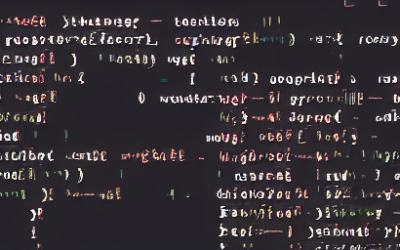There are always new trends in programming, as the field is constantly evolving. Some of the latest trends include functional programming, declarative programming, and concurrent programming.
Tech Blog
Tech Insights, Information, and InspirationMost Popular
Recent Posts
Services
- Project takeover and ongoing maintenance
- Fractional development
- Web scraping marketing & sales leads
- Web Portal & CRM development
- Customer onboarding automation
- Web performance and uptime solutions
- API integration
Get In Touch
UseTech Design, LLC
TROY, MI • BLOOMFIELD HILLS, MI
Call or text +1(734) 367-4100
Case Study | AI Marketing Automation
A multi-agent AI system that automates the entire sales funnel from prospecting to response classification.
Approaching AI: How Today’s Businesses Can Harness Its Capabilities
Artificial Intelligence (AI) has transitioned from being a speculative concept in science fiction to a transformative force across numerous industries. Among the most intriguing aspects of AI are AI agents, which are software entities that perform tasks on behalf of users. Understanding AI agents in real-world terms involves examining their components, capabilities, applications, and the ethical considerations they raise.
AI Agents: Bridging the Gap Between Technology and Real-World Applications
Among the most intriguing aspects of AI are AI agents, which are software entities that perform tasks on behalf of users. Understanding AI agents in real-world terms involves examining their components, capabilities, applications, and the ethical considerations they raise.
Utilizing AI Agents for Effective Legacy Code Modernization
As companies strive to keep pace with innovation, the modernization of legacy code becomes imperative. Artificial Intelligence (AI) agents offer a compelling solution to this problem, providing sophisticated tools and methodologies to facilitate the transition from legacy systems to modern architectures.
Embracing the Future: How AI Agents Will Change Everything
The future with AI agent technology holds immense promise for transforming our world in profound and unprecedented ways. From personalized experiences and seamless integration into daily life to empowering human-computer collaboration and revolutionizing healthcare, AI agents are poised to redefine the way we live, work, and interact with technology.
AI Agents vs. Traditional Customer Support: A Comparative Analysis
While traditional support offers a human touch and emotional connection, AI agents provide scalability, efficiency, and 24/7 availability. Moving forward, businesses must carefully assess their unique needs and customer expectations to determine the optimal balance between AI-driven automation and human interaction.
The Future of Business Intelligence: AI Solutions for Data-driven Decision Making
The future of business intelligence is AI-powered, where data becomes not just a strategic asset but a competitive advantage. In today’s hyper-connected digital world, data has become the lifeblood of business operations. Every click, purchase, and interaction generates valuable information that, when analyzed effectively, can provide crucial insights for strategic decision-making.
Democratized AI: Making Artificial Intelligence Accessible to All
Democratized AI has the potential to revolutionize industries and improve society by making AI technologies more accessible and inclusive. However, it also presents challenges such as data privacy, bias, and ethical considerations that must be addressed to ensure responsible implementation.
Explainable AI (XAI): Techniques and Methodologies within the Field of AI
Imagine a black box. You feed data into it, and it spits out a decision. That’s how many AI systems have traditionally functioned. This lack of transparency can be problematic, especially when it comes to trusting the AI’s reasoning. This is where Explainable AI (XAI) comes in.
Building an AI-Ready Workforce: Key Skills and Training Strategies
As artificial intelligence (AI) continues to transform industries and reshape the employment landscape, the demand for a skilled AI-ready workforce intensifies. Organizations across various sectors are recognizing the imperative of equipping their employees with the necessary skills and knowledge to thrive in an AI-driven world.

